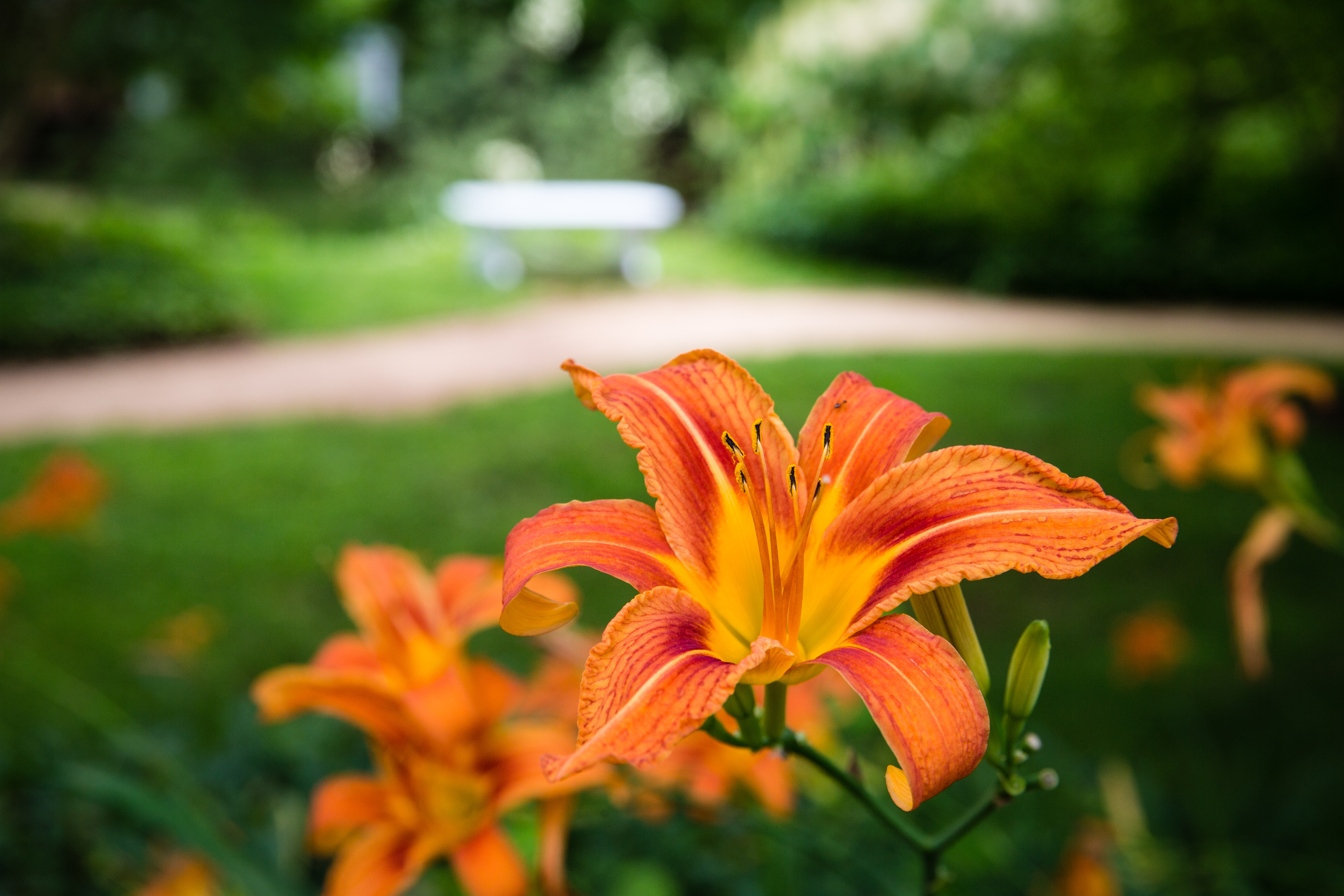The pavilion gardens at the University of Virginia are in full bloom this summer. Located behind the pavilions and between the brick serpentine walls, the gardens feature a diverse array of plants, including flowering shrubs and fruit trees.
More than a century after the serpentine walls were erected, the Garden Club of Virginia, an active association of 47 garden clubs in the commonwealth, reconstructed the pavilion gardens in the 1950s and 1960s using the plans created by landscape architects Alden Hopkins and Donald Parker.
Jefferson originally intended for pavilion residents to care for and cultivate the gardens adjacent to the Academical Village. These days, two gardeners from the University’s Facilities Management landscape group, Michael Beaudreau and Michael Leff, maintain them. Beaudreau and Leff manage roughly five acres of Grounds each. Mowing, raking, leaf removal, pruning, trash pickup and storm cleanup are just a few of their responsibilities.
As Helen Wilson, a landscape architect in the University’s Office of the Architect explains, “They will get assistance throughout the year, but those two individuals pretty much take care of these gardens by themselves year-round. It’s an incredible amount of work.”
The gardeners clearly understand the responsibility that goes with maintaining parts of a UNESCO World Heritage Site.
“Working in the gardens is totally different from working in any other area. It’s a lot of detail,” said Beaudreau, who works in the west gardens. “The gardens are absolutely beautiful and I try to do my best to make them look the best they can.”
Leff, gardener for the east gardens, shared his appreciation for the beauty that they add to Grounds. “It’s great being part of the University community in a place where people come to as an oasis,” he said. “It’s the most beautiful, historic and complex part of Grounds.”
Rich Hopkins, landscape supervisor in Facilities Management, said that his department is always searching for cost-effective ways to improve its work in the gardens around Grounds. Among their sustainability initiatives, the department is investigating new ways to conserve water by installing cisterns. When it comes to conserving resources in the pavilion gardens, “We’re only watering [areas] that are stressed or new,” Hopkins said. “Any watering that has to be done is done by hand.”
The work that the pavilion gardens require rarely goes unnoticed, since the gardens are open to the public and visited throughout the year. Lawn and pavilion residents spend time there, as do students, who study there individually or in small groups. Classes are also held there occasionally, and the gardens are often rented for public gatherings, including weddings and receptions.
“They are public gardens that are incredibly beautiful, with a lot of botanic diversity that people from all over the world come to enjoy,” Wilson said.
Vitex trees, oak leaf hydrangeas, bottlebrush buckeyes and daylilies are just a few of the flowers and trees that currently are blooming in the gardens. In the fall, visitors can expect a variety of fruit trees to be in season.
“In the fall we don’t have a lot of things in bloom, but we do have a lot of fruit that come into season and fall color. We have figs and plums and apples … and of course the fall color is spectacular,” Wilson said.
Though the pavilion gardens are considered a featured attraction at the University, there are other landscapes on Grounds to be enjoyed.
“If you really know the Grounds, you stumble into these special little places – and there are quite a few of them,” Wilson said.
These include the University Cemetery, the Bayly Garden, part of the Betsy and John Casteen Arts Grounds, the South Lawn, the Dell Pond near the Curry School of Education, and Carr’s Hill, home of U.Va. President Teresa A. Sullivan – all of which offer beautiful scenery and vibrant plant life.
U.Va. also offers some amazing off-Grounds gardens, including Morven Farm and the arboretum at Morea House in Albemarle County, Mountain Lake Biological Station in Southwest Virginia and the state’s arboretum at the Blandy Experimental Farm in the Shenandoah Valley.
— by Dana Cypress
Media Contact
Article Information
June 28, 2013
/content/what-s-bloom-uva-and-grounds

